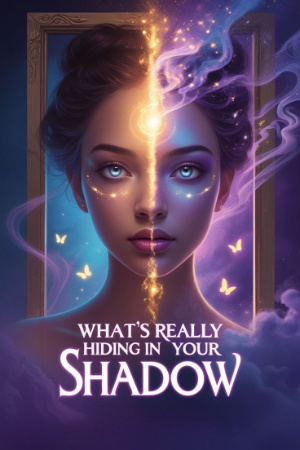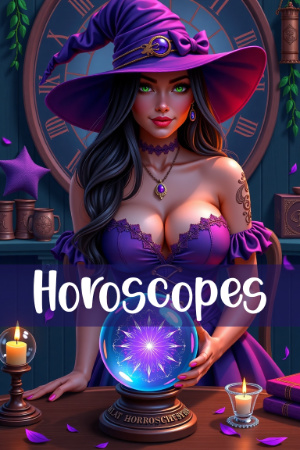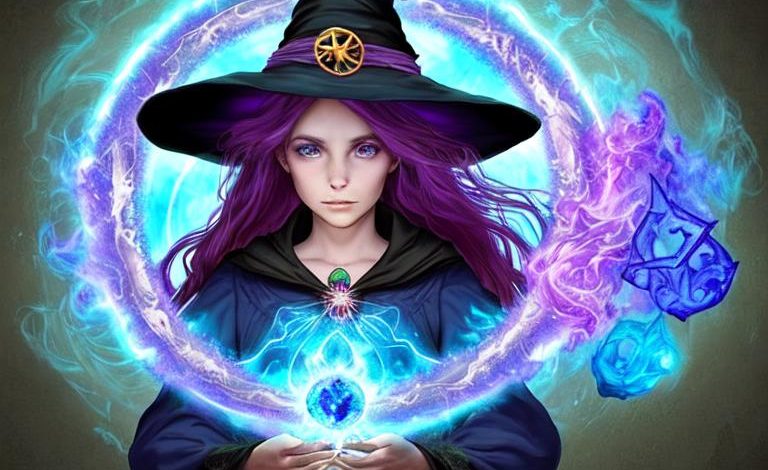
Witches have long been associated with a wide array of tools and objects that are integral to their craft. These tools are imbued with powerful symbolic meanings and are believed to hold great magical power. Each tool is unique and serves a specific purpose in the practice of witchcraft.
One of the most iconic tools in a witch’s arsenal is the broomstick. While most people think of the broomstick as a simple cleaning tool, witches see it as much more. The broomstick is used to sweep away negative energy and to create a protective barrier around the practitioner. It is also a symbol of transformation, as witches believe they can ride their broomsticks to other realms or dimensions.
Another important tool for witches is the cauldron. This large, heavy pot is often used in rituals to hold water, incense, or other items. It is also associated with the element of water and represents the feminine energy of the goddess. The cauldron is often used for scrying or divination, as witches believe that it can reveal hidden truths and insights.
A wand is another important tool for witches. It is often used to direct energy and focus the practitioner’s intent. Wands can be made from a variety of materials, including wood, crystal, or metal. They are often adorned with symbols or sigils that represent the witch’s beliefs and intentions.
Tarot cards are also an important tool for many witches. These cards are used for divination and can provide insight into the future or guidance for decision-making. Each card has a specific meaning and is associated with a different aspect of life. Tarot cards are often used in rituals or ceremonies to gain a deeper understanding of the self or the world around us.
Crystals and gemstones are another important tool in a witch’s practice. These natural objects are believed to hold powerful energy and can be used for healing, protection, or manifestation. Each crystal has a unique vibration and can be used to balance or enhance specific aspects of the self or environment.
The athame is a ritual knife that is often used in ceremonies or rituals. It is believed to represent the masculine energy of the god and is used to direct energy or to create sacred space. The athame is also associated with the element of fire and can be used to draw symbols or sigils in the air.
Candles are a common tool in witchcraft and are often used to represent the element of fire. They are used in spells, rituals, and ceremonies to bring light and warmth to the practitioner’s intentions. Each color of candle has a different meaning and can be used to enhance or focus the practitioner’s intent.
The Book of Shadows is a personal journal that many witches keep to record their experiences, thoughts, and spells. It is a sacred text that contains the witch’s personal beliefs and practices. It is often passed down from generation to generation and is considered a valuable tool in a witch’s practice.
Lastly, the pendulum is a divination tool that is used to answer yes or no questions. It is often made from a crystal or gemstone and is held by a chain or cord. The pendulum swings in response to the practitioner’s questions and is believed to reveal hidden truths or insights.
In conclusion, the tools of a witch are as unique and varied as the practitioners themselves. Each tool holds a special meaning and is used to enhance the practitioner’s power and intent. While some may view these tools as mere superstition, witches know that they hold great power and are an integral part of their practice.
History of magical references and tools
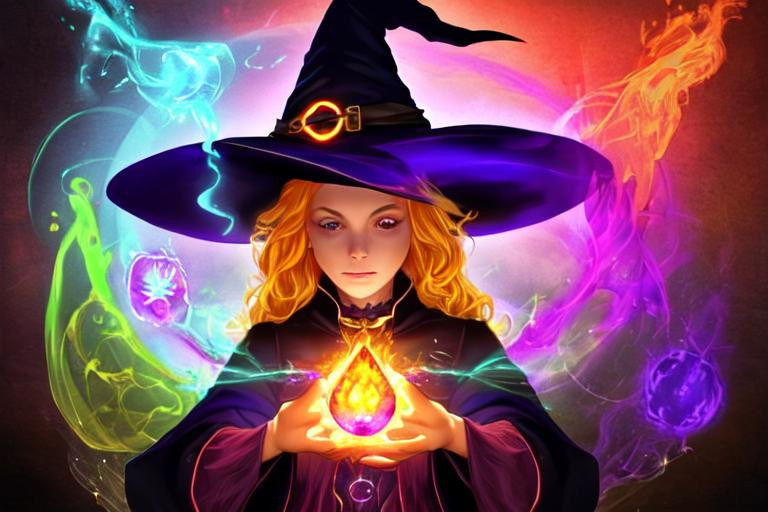
Historical context is an important aspect of understanding the role of magical references and tools in modern-day magical practice. Magic has been practiced in various forms across cultures and societies for thousands of years. While the specific tools and practices vary widely, there are certain themes and motifs that have persisted throughout history.
One of the earliest known examples of magical practice can be found in prehistoric cave art. These images often depict animals and symbols that were believed to have magical or spiritual significance. In many ancient cultures, shamans or priests acted as intermediaries between the human and spirit worlds. These figures used various tools and rituals to communicate with the spirits, and to ask for their assistance or guidance.
In ancient Egypt, magical practice was closely tied to religion. Spells and rituals were used to invoke the gods, and to gain their favor in various aspects of life. The Egyptians also believed in the power of amulets and talismans, which were thought to protect the wearer from harm or to bring them good fortune.
Similarly, in ancient Greece and Rome, magical practice was often associated with religion and mythology. The Greeks and Romans believed in a wide array of gods and goddesses, each of whom had specific areas of influence. Magic was used to communicate with these deities, and to ask for their blessings or help in various aspects of life.
During the Middle Ages, magic was often viewed with suspicion and fear. The Christian church saw magic as a form of heresy or devil-worship, and many practitioners were persecuted or executed. Despite this, magic continued to be practiced in secret, with certain tools and symbols becoming associated with underground magical communities.
The Renaissance saw a resurgence of interest in magic and the occult, with scholars and intellectuals studying ancient texts and exploring the mysteries of the universe. This period also saw the development of new tools and practices, such as the tarot, which was first used as a game but later became an important tool in divination and magical practice.
In the 19th and 20th centuries, a number of new magical traditions emerged, drawing on a variety of cultural and historical influences. The Hermetic Order of the Golden Dawn, for example, was founded in the late 1800s and drew on ancient Egyptian and Greek mystical traditions. Other groups, such as the Theosophical Society and the New Age movement, incorporated elements of Eastern philosophy and spirituality into their practice.
Today, magical practice continues to evolve and adapt to modern times. While some practitioners still draw on ancient traditions and symbols, others are creating new tools and practices that are uniquely suited to the challenges of the modern world. Whether using traditional tools like the tarot and crystals or creating new forms of magical expression, practitioners are finding ways to connect with the divine and to tap into the power of the universe.
Personalizing Your Practice
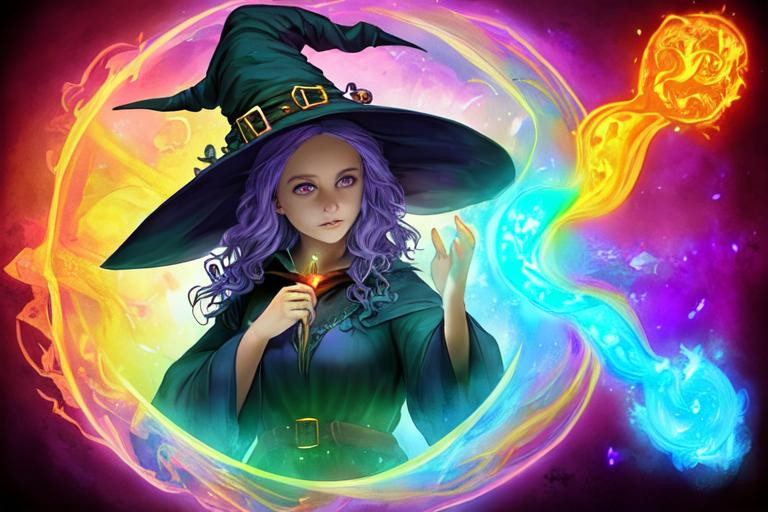
Personalizing your magical practice is an essential aspect of creating a meaningful and effective spiritual path. While there are many tools, correspondences, and practices that are commonly used in magic, it’s important to remember that each person’s journey is unique and that what works for one person may not work for another. Here are some ways to personalize your magical practice:
Identify your intention: Before beginning any spell or ritual, take the time to clearly identify your intention. What do you hope to accomplish with your magic? What energy or quality do you want to manifest? Understanding your intention is the first step in personalizing your practice.
Choose your correspondences: Once you have identified your intention, choose the correspondences that resonate with you. Consider the elements, colors, symbols, and other attributes that align with your desired outcome. It’s okay to experiment and try different correspondences until you find what works best for you.
Create your own tools: While there are many traditional tools used in magic, such as wands, athames, and cauldrons, you can also create your own tools that are meaningful to you. For example, you may want to create a special altar cloth or make your own candles. By creating your own tools, you can infuse your personal energy and intention into your practice.
Explore your heritage: If you have a cultural or ancestral heritage that resonates with you, consider incorporating elements of that heritage into your practice. For example, you may want to use traditional herbs or symbols that have been passed down in your family.
Follow your intuition: In magical practice, your intuition is your greatest guide. Pay attention to your inner voice and trust your instincts. If a certain practice or tool doesn’t feel right to you, don’t use it. Instead, follow what resonates with you and feels authentic to your personal journey.
Keep a journal: Keeping a magical journal can help you track your progress and reflect on your personal experiences. Write down your intentions, correspondences, and any insights or breakthroughs you have during your practice. This can also help you identify patterns and make adjustments to your practice as needed.
Connect with nature: Nature is a powerful source of magic and inspiration. Spend time in nature, observe the cycles of the moon and seasons, and use natural elements in your practice, such as stones, flowers, and herbs. By connecting with nature, you can deepen your spiritual connection and enhance the power of your magic.
Meditate: Meditation is a powerful tool for connecting with your inner self and enhancing your intuition. Incorporate meditation into your daily practice, even if it’s just a few minutes a day. This can help you access deeper levels of insight and clarity in your magical work.
Seek out mentors and community: It can be helpful to connect with others who share your interest in magic and spirituality. Seek out mentors or teachers who can guide you on your path, and join a community of like-minded individuals who can offer support and encouragement.
Be open to growth and change: Personalizing your magical practice is an ongoing process of growth and change. Be open to trying new practices and exploring new correspondences. As you evolve on your spiritual path, your practice may evolve as well.
Personalizing your magical practice is a key aspect of creating a meaningful and effective spiritual path. By identifying your intention, choosing your correspondences, creating your own tools, exploring your heritage, following your intuition, keeping a journal, connecting with nature, meditating, seeking out mentors and community, and being open to growth and change, you can create a practice that is unique to you and aligned with your personal journey. Remember that there is no one right way to practice magic, and that what works for one.
Ethics and Responsibility
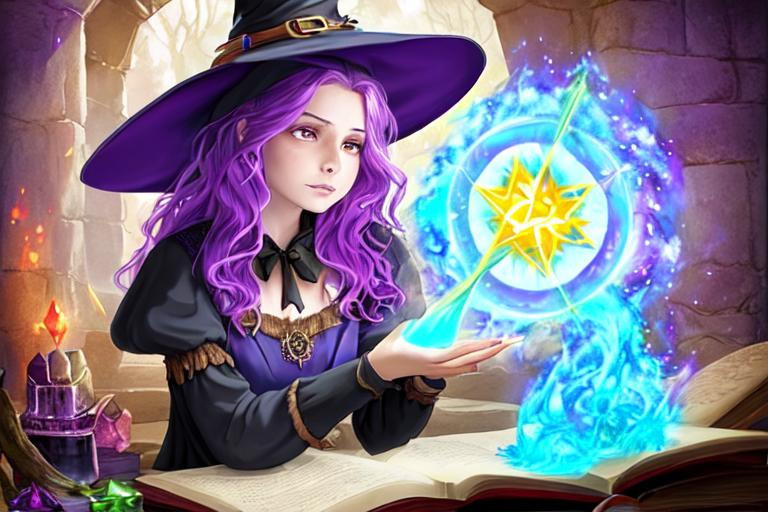
As with any spiritual practice, magic comes with its own set of ethics and responsibilities. Understanding these ethical considerations is essential to practicing magic responsibly and effectively. Here are some key ethical considerations to keep in mind:
Harm none: This is perhaps the most important ethical principle in magic. The concept of “harm none” means that magic should not be used to harm or manipulate others in any way. This includes both physical harm and emotional harm. Practitioners should always strive to use their magic for positive and constructive purposes.
Consent: Consent is another important ethical consideration in magic. Magic should never be performed without the consent of all parties involved. This includes spells or rituals that are intended to influence others in any way. Practitioners should always seek the consent of the individuals involved before performing any magic that may affect them.
Respect for others’ beliefs: While magic is a deeply personal and individual practice, it’s important to respect the beliefs and practices of others. Practitioners should avoid proselytizing or attempting to convert others to their own beliefs. Instead, they should focus on their own practice and allow others to follow their own paths.
Honesty and integrity: Honesty and integrity are essential to ethical magical practice. Practitioners should be honest with themselves and others about their intentions and the outcomes they hope to achieve. They should also avoid dishonest or manipulative behavior in their interactions with others.
Responsibility: Practitioners of magic should take responsibility for their actions and the consequences of their magic. This means being aware of the potential effects of their spells or rituals and taking steps to mitigate any negative outcomes. It also means being accountable for any harm that may result from their magic.
Cultural appropriation: Practitioners should be mindful of the cultural origins of their magical practices and avoid appropriating the spiritual traditions of others. This includes using sacred symbols or practices from cultures to which they do not belong without proper respect and understanding.
Non-judgment: Magic should not be used to judge or condemn others. Practitioners should strive to practice non-judgment and compassion in all their interactions with others.
Self-care: Practitioners should take care of themselves physically, emotionally, and spiritually. This includes practicing self-care rituals and techniques, setting healthy boundaries, and avoiding burnout.
Ethics and responsibility are essential considerations in magical practice. Practitioners should strive to harm none, seek consent, respect others’ beliefs, practice honesty and integrity, take responsibility for their actions, avoid cultural appropriation, practice non-judgment, and prioritize self-care. By keeping these ethical considerations in mind, practitioners can create a positive and meaningful practice that is aligned with their personal values and beliefs.
Types of Tools
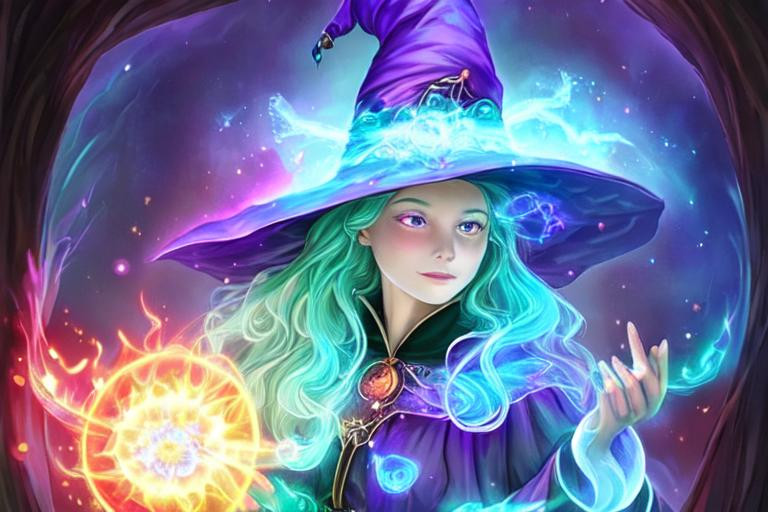
Types of tools are an essential component of magical practice, and many different tools are used in various traditions and practices. Each tool has its own unique history and symbolism, and practitioners may choose to work with different tools based on their personal preferences, the nature of their magical practice, and their cultural or religious background. Here are some of the most common types of magical tools and their uses:
Altar: An altar is a sacred space that is set up specifically for magical work. It can be as simple or as elaborate as the practitioner desires, and typically includes items such as candles, incense, and symbols or representations of the elements. The altar is a place to focus intention and connect with the divine.
Athame: The athame is a ceremonial knife that is typically used for directing energy and creating boundaries. It is often associated with the element of air and is used to cast circles and cut through energetic barriers.
Wand: The wand is a tool that is used to direct energy and focus intention. It is often associated with the element of fire and can be used for spells, rituals, and energy work.
Chalice: The chalice is a cup or goblet that is used to hold liquids, such as water or wine, during rituals and ceremonies. It is often associated with the element of water and can be used to represent the feminine aspects of divinity.
Pentacle: The pentacle is a symbol that represents the four elements of earth, air, fire, and water, as well as the spirit. It is often used as a focus for meditation and is believed to have protective properties.
Candles: Candles are a common tool in magical practice and are often used to represent specific energies or intentions. Different colors of candles are associated with different aspects of magic, such as healing, love, or protection.
Crystals: Crystals are believed to have specific energies and properties that can be used to enhance magical work. Different crystals are associated with different aspects of magic, such as grounding, protection, or manifestation.
Tarot Cards: Tarot cards are a tool for divination and are often used to gain insight into the past, present, or future. Each card has its own meaning and symbolism, and practitioners use the cards to gain guidance and clarity.
Runes: Runes are an ancient form of divination that use symbols etched onto stones or other materials. Each rune has its own meaning and symbolism, and practitioners use them to gain insight into specific questions or situations.
Bells: Bells are often used to signal the beginning or end of a ritual or to clear negative energy from a space. The sound of a bell is believed to have cleansing and purifying properties.
Incense: Incense is a tool that is used to purify a space and create a specific atmosphere. Different types of incense are associated with different aspects of magic, such as protection, healing, or divination.
Oils: Essential oils are often used in magic to enhance the energy of a ritual or spell. Different oils are associated with different aspects of magic, such as prosperity, love, or healing.
Amulets and Talismans: Amulets and talismans are objects that are believed to have protective or empowering properties. They can be worn as jewelry or carried with the practitioner as a form of magical protection or to help manifest a specific intention.
Mirrors: Mirrors are often used in scrying, a form of divination where the practitioner gazes into the mirror to gain insight into a question or situation. Mirrors can also be used to reflect and redirect energy during magical work.
Books of Shadows: A book of shadows is a journal or grimoire that is used to record magical knowledge, spells, and rituals. It is a personal record that allows practitioners to track their progress and refine their practice over time.
Cauldron: The cauldron is a symbol of transformation and is often used in magical work to represent the element of water and the goddess. It can be used for scrying, as a receptacle for offerings, or to burn herbs and incense.
Boline: The boline is a ritual knife that is used for practical tasks such as cutting herbs, carving symbols into candles, or preparing offerings. It is often associated with the element of earth and is a tool for manifesting physical reality.
Scourge: The scourge is a tool that is used for self-discipline and purification. It is often used in traditions such as Wicca as a way to symbolically “whip” away negative energies and habits.
Staff: The staff is a symbol of power and authority and is often used in shamanic or druidic traditions. It can be used for journeying, as a tool for directing energy, or as a symbol of spiritual leadership.
Besom: The besom is a broomstick that is often used to sweep negative energy from a space or to purify a room before magical work. It is also associated with fertility and can be used in fertility rites.
Magical tools are an integral part of many spiritual practices and traditions. Each tool has its own unique history and symbolism, and practitioners may choose to work with different tools based on their personal preferences and the nature of their magical practice. Whether it is candles, crystals, tarot cards, or any of the other tools mentioned above, they are all used to focus intention and create a connection with the divine. By using these tools with intention and respect, practitioners can deepen their magical practice and enhance their connection to the spiritual world.
Finding Resources
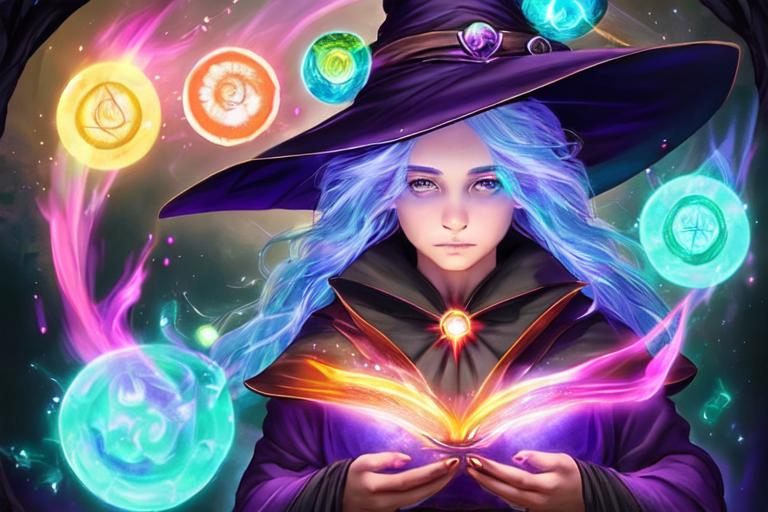
Finding resources for magical practice can be an exciting and daunting task, especially for beginners. There are many different types of resources available, from books and online articles to workshops and classes. Here are some tips for finding resources to support your magical practice:
Research: The first step in finding resources for your magical practice is to do your research. Look for books, articles, and websites that cover topics of interest to you. Make a list of authors and experts whose work resonates with you.
Online communities: Online communities can be a great resource for magical practitioners. Joining a forum or Facebook group can help you connect with like-minded individuals and find resources that are relevant to your practice. Just be sure to use caution and discretion when interacting with others online.
Local bookstores and libraries: Local bookstores and libraries can be a treasure trove of magical resources. Check out the occult section at your local bookstore, and look for books on magic, witchcraft, paganism, and related topics. You may also find books on folklore, mythology, and herbalism helpful for your practice.
Workshops and classes: Workshops and classes can be a great way to deepen your knowledge and connect with other practitioners. Look for workshops or classes offered by local metaphysical shops, community centers, or online resources. These may cover a range of topics, from basic witchcraft to advanced ritual practices.
Podcasts and YouTube channels: Podcasts and YouTube channels can be a great resource for magical practitioners. Look for channels and podcasts that cover topics of interest to you, and subscribe to those that resonate with your personal style and philosophy.
Local festivals and events: Attending local festivals and events can be a great way to connect with other practitioners and find resources for your practice. Look for events that are focused on magic, witchcraft, or pagan traditions. These may include workshops, lectures, or vendor booths selling magical supplies.
Personal recommendations: Ask other practitioners for recommendations on books, workshops, or other resources that have been helpful to them. This can be a great way to find resources that are specifically tailored to your interests and needs.
DIY resources: Finally, don’t be afraid to create your own resources for your magical practice. This may include creating your own spells, rituals, or magical tools. It may also include keeping a personal journal or grimoire to track your progress and insights.
Finding resources for your magical practice can be a fun and rewarding process. By doing your research, connecting with like-minded individuals, and exploring a variety of resources, you can deepen your knowledge and create a rich and meaningful practice. Just remember to approach all resources with an open mind and a discerning eye, and to always prioritize your own intuition and personal values in your practice.
Correspondences
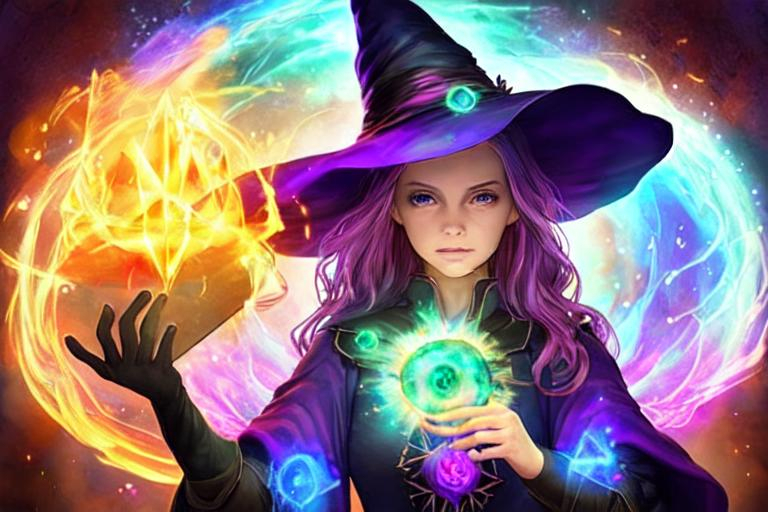
Correspondences are a fundamental aspect of magical practice that involve connecting various symbols, elements, colors, and other attributes with specific energies or intentions. By understanding correspondences, practitioners can enhance their magical work by choosing the right tools, symbols, and rituals to align with their desired outcome. Here are some common correspondences used in magic:
Elements: The four classical elements – air, fire, water, and earth – are often used in magical practice to represent different aspects of nature and the human experience. Air represents communication, intellect, and thought, fire represents passion, creativity, and transformation, water represents emotions, intuition, and healing, and earth represents stability, grounding, and physical manifestation.
Zodiac Signs: Each of the 12 zodiac signs is associated with a set of correspondences that can be used in magical work. For example, Aries is associated with the element of fire, the planet Mars, and the color red, while Pisces is associated with the element of water, the planet Neptune, and the color purple.
Planets: The seven classical planets – Mercury, Venus, Mars, Jupiter, Saturn, Uranus, and Neptune – are each associated with a set of correspondences that can be used in magical work. For example, Mercury is associated with communication, travel, and commerce, while Saturn is associated with discipline, structure, and boundaries.
Colors: Colors are often used in magical practice to represent different energies or intentions. For example, red represents passion and vitality, green represents abundance and growth, and black represents protection and banishing.
Gemstones: Gemstones and crystals are often used in magical practice to enhance or direct energy. For example, amethyst is associated with intuition and spirituality, while citrine is associated with abundance and manifestation.
Animals: Different animals are associated with different energies and qualities that can be used in magical work. For example, the eagle represents courage and strength, while the rabbit represents fertility and creativity.
Herbs: Herbs are often used in magical practice for their medicinal and spiritual properties. Each herb has its own unique set of correspondences based on its scent, taste, and healing properties. For example, lavender is associated with relaxation and sleep, while rosemary is associated with memory and mental clarity.
Tarot: The 78 cards of the tarot deck are each associated with a set of correspondences based on their symbolism and meaning. For example, the Major Arcana card The Fool is associated with new beginnings and taking risks, while the Minor Arcana card The Ace of Swords is associated with mental clarity and cutting through illusions.
Moon Phases: The phases of the moon are often used in magical practice to align with specific energies and intentions. For example, the waxing moon is associated with growth and new beginnings, while the waning moon is associated with release and banishing.
Days of the Week: Each day of the week is associated with a planet and set of correspondences that can be used in magical work. For example, Wednesday is associated with communication and the planet Mercury, while Friday is associated with love and the planet Venus.
Numbers: Different numbers are associated with different energies and qualities that can be used in magical work. For example, the number 3 is associated with creativity and manifestation, while the number 7 is associated with intuition and spirituality.
Symbols: Symbols such as pentagrams, crosses, and spirals are often used in magical practice to represent different energies or intentions. For example, the pentagram is associated with protection and the four elements, while the spiral is associated with growth and transformation.
Moon Phase: The phase of the moon is often used to correspond with different energies and intentions. For example, the new moon is associated with new beginnings and setting intentions, while the full moon is associated with abundance and manifestation.
Days of the Week: Each day of the week is associated with a different planet and corresponding energy. For example, Sunday is associated with the sun and is often used for spells and rituals related to success, confidence, and self-expression.
Animals: Different animals are associated with different energies and qualities. For example, a cat may be used in magic for protection and intuition, while a wolf may be used for strength and courage.
Crystals: Different crystals are believed to have different energies and properties that can be used in magical practice. For example, rose quartz is often used for love and healing, while amethyst is used for spiritual protection and connection.
Astrological Signs: Each astrological sign is associated with different qualities and energies that can be used in magic. For example, the sign of Aries is associated with courage and leadership, while Pisces is associated with intuition and empathy.
Herbs: Different herbs are associated with different energies and can be used in spells and rituals. For example, lavender is often used for relaxation and peace, while cinnamon is used for prosperity and abundance.
Elements: The four classical elements of earth, air, fire, and water are often used in magic to correspond with different energies and qualities. For example, earth is associated with grounding and stability, while air is associated with communication and mental clarity.
Numbers: In numerology, different numbers are believed to correspond with different energies and qualities. For example, the number 7 is often associated with spirituality and intuition, while the number 8 is associated with success and abundance.
By understanding and utilizing correspondences in magical work, practitioners can enhance the power and effectiveness of their spells, rituals, and spiritual practice. It’s important to note, however, that correspondences are not set in stone and can vary depending on the practitioner, tradition, and culture. It’s up to each individual to explore and experiment with different correspondences to see what works best for them.
Another important aspect of correspondences is the concept of polarity. In magical practice, everything is believed to have a polar opposite, such as light and dark, masculine and feminine, or positive and negative. By working with correspondences that align with the desired polarity, practitioners can create balance and harmony in their magical work.
It’s also worth mentioning that correspondences can be used in different ways depending on the individual’s intention and the type of magic being practiced. For example, a practitioner may use a red candle to represent passion and love in a love spell, but may also use a red candle to represent energy and motivation in a spell for success or creativity.
Ultimately, the use of correspondences in magical practice is a personal and intuitive process. It’s up to each individual to explore and experiment with different symbols, elements, colors, and other attributes to find what resonates with them and aligns with their desired outcome.
Correspondences are an essential aspect of magical practice that involve connecting different symbols, elements, colors, and other attributes with specific energies or intentions. By understanding correspondences and working with them in their practice, practitioners can enhance the power and effectiveness of their spells, rituals, and spiritual work. While correspondences may vary depending on the practitioner, tradition, and culture, the concept of polarity and balance remains a fundamental aspect of magical practice. It’s up to each individual to explore and experiment with different correspondences to see what works best for them and aligns with their desired outcome.
Magical References and Tools
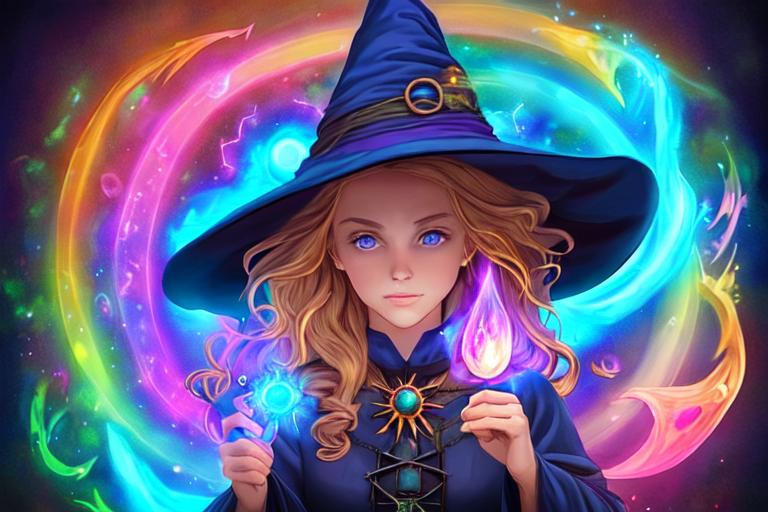
Alfatofrar – Norse term for elf magick or any influences of enchantment.
Alfheim – Upper world home of the light elves in Norse mythology.
Angels – Angels act as intermediaries between the divine and the mortal, they are heavenly messengers.
Animism – Belief that all things animate or inanimate have a soul or spirit, this goes beyond the physical form and connects the spiritual with the physical.
Archetypes – Within the human experience there are universally recognised themes that are part of the collective unconsciousness, father, brother, sister, lover, child, husband, wife, dreamer. Myths are base upon these themes.
Asgard – The home of the upper world Norse Gods.
Avalon – This is where King Arthur was taken as he lay dying by Morgan, the ruler of nine fairy sisters who guarded the apples of fairyland. Avalon is also known as The British Isle of Apples.
Beltane – This takes place on May 1, and is the faery and elf May Day festival.
Blessing – A ritual used to consecrate by spiritual rite or word, a blessing.
Celts – The Celts settled in modern day Ireland, England and Wales, they were a group of Germanic tribes.
Devas – These are nature spirits who give direction to and work with the elemental energy and embody the essential energy and spirit of the plant species that they are associated with.
Dreamtime – Peculiar to the Aboriginal culture, a symbology similar to faeries and elves, it refers to a time before memory when ancestral spirits walked the earth and formed its natural features.
Earth Mother – Mother goddess who is the embodiment of the earth, representing all the qualities of earth and embodying its combined wisdom.
Eddas – Poems that are stories of the Norse gods and goddesses, and the origin of the world and all that is in it, including elves and dwarves.
Eildon Tree – This is a name given to the hawthorn tree which the sacred tree of elves and faeries.
Elementals – These are beings that spring from the basic elements and are creators of form, they connect creative energy and physical form.
Elements – These are Earth – Air – Fire – Water.
Elvenstar – Seven pointed star known as the faery star.
Elves – Magickal creatures called the white spirits, Elves of Light, the firstborn, the speakers, the elder (eldar) people and folk of the wood, they are blessed with extraordinary powers.
Enchantment – Faery and Elven magick.
Faeries – Creatures who possess magickal and supernatural powers, they revere and embody life and nature.
Faery Circle – This is a connection, a bridge between tying the human and faery world together, usually seen as a ring of flowers, shells, grass or stones.
Faery Garden – This garden is built specifically with faeries in mind, flowers and trees special to faeries and elves are planted to attract these beautiful creatures.
Faery Guardian – These helpful spirits protect the elemental doorway of your natural space, they are known also as the Watchers, their task is to watch and protect the thresholds of the seven directions, holding them in place until you bid farewell.
Faery Kings – Consorts to the faery queen, they are the gods of Irish tribes and defend the Irish clans.
Faery Magick – You experience faery magick when you leave the ordinary world and enter the realm of faeries.
Faery Queens – These goddesses of Irish tribes still guard the Irish clans and families. These magickal faery queens are the source of creation and sovereignty of the land.
Faery Ring – This is known as an energetic ring and can be made using string, flowers, stones, seeds, twigs or leaves, it is made by faeries.
Faery Tale – This is any story which involves all manner of magickal creatures, magickal forces.
Faeryland – This is a land filled with magickal beings going about their everyday lives just as mortals do. The otherworld is a mirror of the mortal world but with extraordinary things taking place, it is where no one ages or gets sick, where there is none of the discomfort experienced by humans.
Findhorn – A place in northern Scotland where people live apart from the rest of the world, living on and tending to the land, growing organic vegetables and working together as a community, embracing spirituality and meditation.
Focals – Items used in ritual and magick to give focus and energy.
Folklore – These are customs, beliefs, traditions and cultures preserved within myths, legends, proverbs, folk stories, faery tales and art.
Gebo – This is the Norse rune symbolising the giving and receiving in life. Written like an X it represents the giver and the taker, is also the coming together of two elements that work together.
Gentry – The way elves and faeries prefer to be referred.
Geomancy – An ancient, holistic, integrated system of natural science and philosophy keeping human activity in harmony with natural geometric patterns of nature.
Glamor – A magickal way elves and faeries create an illusion to hide themselves from humans.
Great Days – These are the names the ancient Celts gave to the times of the year when the Sun and the Earth are aligned in specific positions, in particular the solstices, equinoxes and cross-quarter days, they are known as the Sabbats.
Heirloom Seeds – These seeds are of different varieties and cultivated through generations of plant.
Instant Karma – This result of your actions coming back to you very quickly.
Irish Mythology – Tales of the five invasions of Ireland that happened in different periods of Irish history, most relevant to the faery beings is the Tuatha De Danann.
Jotunheim – In Norse mythology the home of the giants who came into creation with Ymir.
Karma – Everything we do in life accumulates either good or bad karma and the consequences depend on our intentions and actions.
Leprechaun – A faery associated with elves, both have traditional ties to shoemaking.
Living Traditions – Spiritual traditions accepting everything is alive with spirit and continuously evolving, like nature, faery rings and mythology.
Lugnassad – Beginning in August a time that signals the end of summer and the beginning of Autumn. Lughnassad (Lammas) means Lugh’s wedding feast.
Magick – Something mystical, extraordinary, beyond logic, unknown, unseen, enchantment, glamour, altering your perceptions.
Meditation – An altered state of awareness making you receptive to other realms, leading to Divine insights and understanding.
Midgard – The world of mortal humans, Middle Earth.
Midsummer’s Eve (St. John’s Eve) – The eve before the summer solstice, one of the primary elf and faery festival days.
Morphogenic Field – Rupert Sheldrake’s theory that an energetic field of resonance is just beyond the spectrum of normal human perception.
Mother Goddess – All growing things are believed to have come from this sole deity.
Mythology – Collection of myths legends of a particular people, revealing their perception of order and power in the world.
New Age – New age practices include channeling, crystals, organic farming and gardening, meditation, herbology, Bach Flower remedies, oils, reiki, working with the energies of faeries, angels and spirits, spiritual workshops.
Nifelheim – Home of the frost giants in Norse mythology.
Norse – Combination of Germanic tribes who moved northward and settled in Scandinavia, Sweden, Norway and Denmark.
Otherworld – Faeryland an invisible world, where the natural laws of the universe don’t apply, land of immortality.
Peri – Turkish word for faery or beautiful girl.
Perilous Realm – Also known as the faery realm.
Pixie – Similar to a faery.
Pixilated – A term used to describe someone affected by the elves and faeries.
Polarities – Positive, negative, and neutral energies of the universe.
Power Hand – The hand you use to direct energy and power, your dominant hand.
Prophecy – The ability to predict events before they occur, foreseeing the future, prophecies are considered messages from the divine.
Quest – A journey of transformation, body, mind and spirit.
Rath – This is a faery fort or mound usually surrounded by a ditch.
Receiving Hand – If you are right-handed it is your right hand, if you are left-handed it is your left hand.
Ritual – A specific way of doing something, enacting a myth.
Runes – Magickal symbols representing cosmic energies at work in the universe. In the Elder Futhark each of the 24 runes opens a doorway into faeryland.
Sacred Geometry – Known as the language of creation and the language of light, sacred geometry revolving around the idea that energy moves in universal patterns, these patterns influence the form of everything, including our DNA.
Samhain – Halloween is the time when the veil between the mortal and ethereal world is at its thinnest and is easily penetrated.
Second Sight – The ability to perceive things beyond the five senses or any logical understanding, known as clairvoyance.
Shape Shifting – The ability to change form at will.
Sidhe (pronounced shee) – Irish word for faery.
Sleeper Kings – Ancestral kings whose energy and knowledge waits to be summoned by future generations.
Spirit – Energy connecting all elements together, everything has spirit, spirit is considered the fifth element or the union of all other elements, this union forms the divine essence.
Staurolite – Powerful faery stone called the Faery Cross.
Svartalfheim – Norse home of the dwarves in the lower world.
Tir-na-n-Og (country of the young) – Home of the Celtic gods and goddesses, the Land of the Blessed, and the divine land of immortality, age and death have no power there.
Tradition – Information, beliefs and customs passed down from generation to generation, with traditions continually evolving and being reinvented.
Tuatha De Danann – Tribe of the goddess Danu (Anu) that invaded Ireland by coming down from the skies, creating a thick mist on May Day morning.
Vanaheim – This is the world in which the ancient nature gods and goddesses in Norse mythology live.
Wizard – Magician who controls the elements.
Wormhole – A doorway through the time/space continuum, which used the natural folds of space to move great distances at high speed, also avenues to the faery realm.
Wyrrd – Norse spiritual traditon, a magickal energy where everything is interconnected. This is the energy Rune masters use to see into the future.
Y Tywyth Teg – Welsh name for faeries (the fair folk) (family), or y Tylwyth Teg yn y Coed, meaning the fair family in the wood.
Yggdrasil – The World Tree in Norse mythology whose branches held the nine worlds, three worlds above (including the light elf world), three worlds in the middle (including Middle Earth), and three worlds below (including the dark elf world).
Yule – Occurring at the winter solstice, The Great Day or Sabbat, falls around December 21, a time of celebration that is still celebrated during Christmas time.



